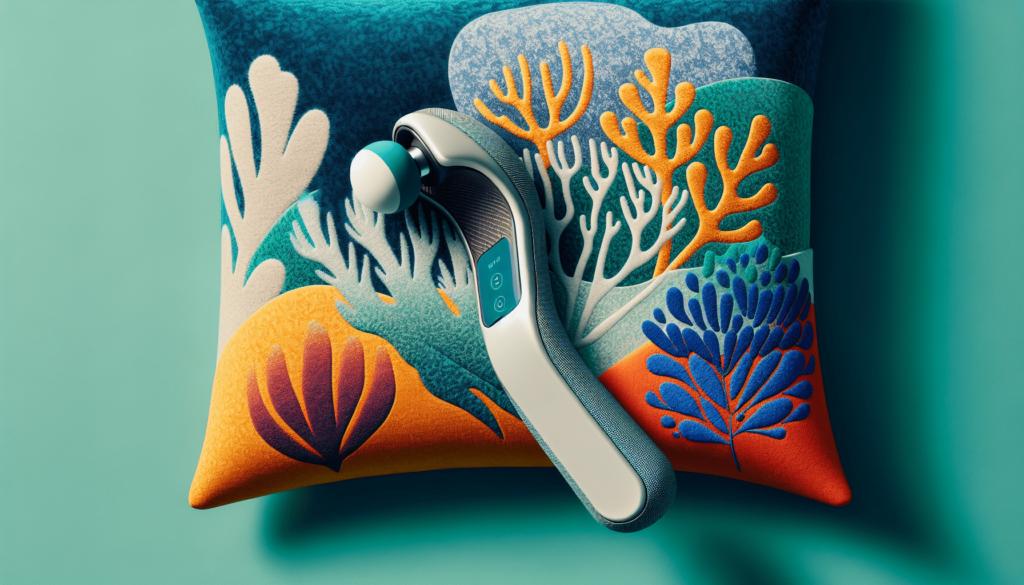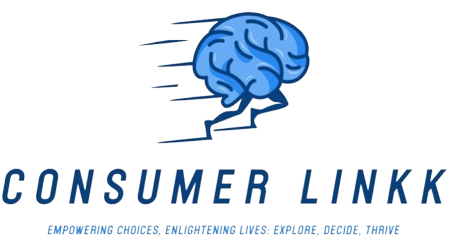Are you tired of dealing with constant back and spine pain? Look no further, as this article presents 10 effective techniques that will help you find relief. From simple stretching exercises to ergonomic adjustments in your daily routine, these techniques are designed to alleviate the discomfort and promote a healthier lifestyle. Say goodbye to those nagging aches and discover the key to a pain-free back and spine. So, let’s get started on your journey towards a more comfortable and active life.
Stretching exercises
Hip flexor stretch
The hip flexor stretch is a great way to alleviate back and spine pain. To perform this stretch, start by kneeling on one knee with the other leg forward, making sure both knees are at a 90-degree angle. Slowly lunge forward, keeping your back straight, until you feel a stretch in the front of your hip. Hold the stretch for about 30 seconds and then switch sides.
Child’s Pose
Child’s Pose is a relaxing stretch that targets the muscles in your lower back. Start by sitting on your knees and then slowly bring your upper body forward, lowering your chest towards the ground. Stretch your arms out in front of you and rest your forehead on the floor. Hold this position for 30 seconds to 1 minute, taking deep breaths to enhance the stretch.
Cobra pose
The cobra pose is a gentle backbend that helps strengthen and stretch the muscles in your lower back. Start by lying on your stomach with your legs extended behind you. Place your hands flat on the ground, at shoulder height, and slowly push your upper body off the ground, using your back muscles. Keep your arms slightly bent and lift your chest as high as you comfortably can. Hold this position for 15-30 seconds and then lower yourself back down.
Hamstring stretch
Tight hamstrings can contribute to back and spine pain, so stretching them regularly is important. To perform a hamstring stretch, sit on the edge of a chair with one leg extended straight in front of you. Slowly hinge forward at the hips, keeping your back straight, until you feel a stretch in the back of your thigh. Hold the stretch for 30 seconds and then repeat on the other leg.
Strengthening exercises
Abdominal exercises
Strong abdominal muscles help support your back and can help alleviate pain. Exercises such as crunches, planks, and bicycle crunches target the core muscles and can improve stability and posture.
Bridges
Bridges are a great exercise for strengthening the muscles in your lower back and buttocks. To perform a bridge, lie on your back with your knees bent and feet flat on the ground. Slowly lift your hips off the ground, engaging your glutes and core muscles. Hold this position for a few seconds and then lower yourself back down. Repeat the exercise for 10-12 repetitions.
Plank exercises
Planks are an excellent way to strengthen your core muscles, including your back muscles. Start by getting into a push-up position, with your hands directly under your shoulders. Engage your core and hold this position for as long as you can, aiming for at least 30 seconds. As you progress, you can increase the duration of the hold.
Supermans
Supermans are a great exercise for targeting the muscles in your lower back. Lie face down on the ground with your arms extended overhead and your legs straight. Lift your arms and legs off the ground simultaneously, keeping your core engaged. Hold the position for a few seconds and then slowly lower yourself back down. Repeat for 10-12 repetitions.

Proper posture and ergonomics
Maintaining neutral spine
Maintaining a neutral spine is crucial for preventing and relieving back and spine pain. To achieve a neutral spine, sit or stand with your ears, shoulders, and hips aligned. Avoid slumping or hunching over, as this can put unnecessary strain on your back. Practice good posture throughout the day, making a conscious effort to avoid prolonged periods of poor posture.
Choosing supportive chairs
When sitting for extended periods, it’s important to choose a chair that provides adequate support for your back. Look for chairs with adjustable lumbar support and ensure that the chair allows you to maintain proper posture. Avoid chairs that are too soft or lack proper support, as they can contribute to back pain.
Proper desk setup
Setting up your desk ergonomically can significantly reduce back and spine pain. Make sure your desk is at the appropriate height so that your elbows are at a 90-degree angle when typing. Position your monitor at eye level to avoid straining your neck. Consider using a standing desk or an adjustable desk to alternate between sitting and standing throughout the day.
Using a lumbar support pillow
If you experience back pain while sitting, using a lumbar support pillow can provide relief. A lumbar support pillow helps maintain the natural curve of your spine and provides additional support for your lower back. Place the pillow against the back of your chair and adjust it to your comfort level.
Heat and cold therapy
Hot compress
Applying a hot compress to your back can help relax muscles and alleviate pain. You can use a heating pad, a hot water bottle, or a warm towel for this. Apply the hot compress to the affected area for 15-20 minutes, making sure to protect your skin from excessive heat.
Cold compress
Using a cold compress can help reduce inflammation and numb the area, providing temporary pain relief. You can use a bag of ice wrapped in a towel or a cold pack for this. Apply the cold compress to the affected area for 10-15 minutes, making sure to wrap it in a cloth to prevent direct contact with your skin.
Alternate hot and cold therapy
Alternating between hot and cold therapy can be an effective way to manage back and spine pain. Start with a hot compress for 15 minutes, followed by a cold compress for 10-15 minutes. Repeat this cycle for a total of 30-45 minutes, ending with a cold compress.
Heated blankets or pads
Using heated blankets or pads can provide continuous warmth and relaxation for your back muscles. These can be especially beneficial during sleep or when resting. Make sure to follow the manufacturer’s instructions and use them safely.

Massage therapy
Deep tissue massage
Deep tissue massage focuses on the deeper layers of muscles and connective tissue to alleviate tension and promote relaxation. This type of massage can target specific areas of pain in your back and spine, helping to relieve muscle tightness and improve flexibility.
Trigger point therapy
Trigger point therapy involves applying pressure to specific points in the muscles to release tension and alleviate pain. By identifying and targeting trigger points in your back and spine, a trained therapist can effectively relieve pain and promote muscle relaxation.
Swedish massage
Swedish massage is a gentle, full-body massage that can help reduce stress and muscle tension. This type of massage focuses on long, flowing strokes and kneading to promote circulation and relaxation. Swedish massage can be beneficial for overall relaxation and can indirectly alleviate back and spine pain caused by stress and tension.
Hot stone massage
Hot stone massage involves placing heated stones on specific areas of the body to promote muscle relaxation and improved circulation. The warmth from the stones can help soothe tight muscles in your back and spine, providing relief from pain and tension.
TENS therapy
How TENS therapy works
Transcutaneous Electrical Nerve Stimulation (TENS) therapy involves using a small, battery-operated device to deliver low-voltage electrical currents to your back. These electrical currents help stimulate the nerve fibers in your back, which can block pain signals from reaching your brain.
Benefits of TENS therapy
TENS therapy can provide temporary pain relief, reduce muscle spasms, and improve blood circulation. It is non-invasive and can be used at home or under the guidance of a healthcare professional. TENS therapy is often used as a complementary treatment for back and spine pain.
Using a TENS machine
To use a TENS machine, you should first consult with a healthcare professional for proper guidance. They will help you determine the appropriate settings and electrode placement for your specific needs. Once you have the necessary information, you can apply the electrodes to your back and adjust the intensity level to a comfortable and effective level.
Precautions and considerations
While TENS therapy is generally safe, there are some precautions and considerations to keep in mind. Avoid using TENS therapy if you have certain medical conditions, such as epilepsy or a pacemaker. It is also important to follow the instructions provided by your healthcare professional and not exceed the recommended usage. If you experience any adverse effects or increased pain, discontinue use and consult with your healthcare professional.

Acupuncture
What is acupuncture
Acupuncture is a traditional Chinese medicine practice that involves inserting thin needles into specific points on the body. These points, known as acupuncture points, are believed to be connected to energy pathways that can be stimulated to promote pain relief and overall wellness.
How acupuncture works for back pain
For back pain, acupuncture can help stimulate blood flow, release endorphins (natural painkillers), and relax muscles. By targeting specific acupuncture points on the body, an acupuncturist can help alleviate pain in the back and spine.
Benefits of acupuncture
Acupuncture has been shown to be effective in providing pain relief for various conditions, including back and spine pain. It is a non-invasive treatment option that can be used in conjunction with other therapies for a holistic approach to pain management. Acupuncture can also help reduce stress and promote relaxation.
Finding a qualified acupuncturist
When seeking acupuncture treatment for back and spine pain, it is important to find a qualified and licensed acupuncturist. Ask for recommendations from healthcare professionals or trusted sources. Make sure the acupuncturist has the necessary credentials and experience in treating back pain. It is also important to communicate your specific needs and concerns during your initial consultation.
Pain medication
Over-the-counter pain relievers
Over-the-counter pain relievers, such as acetaminophen or nonsteroidal anti-inflammatory drugs (NSAIDs) like ibuprofen, can help reduce pain and inflammation associated with back and spine pain. These medications can be taken orally or applied topically in the form of creams or gels. It is important to follow the recommended dosages and guidelines provided by the manufacturer.
Prescription pain medication
In some cases, prescription pain medication may be necessary to manage severe or chronic back and spine pain. These medications are typically prescribed by a healthcare professional and should be used under their supervision. It is important to follow the prescribed dosage and guidelines, as well as to be aware of potential side effects and interactions with other medications.
Muscle relaxants
Muscle relaxants can help relieve muscle spasms and tension associated with back and spine pain. These medications work by targeting the central nervous system to promote muscle relaxation. Like prescription pain medication, muscle relaxants should be used under the supervision of a healthcare professional and with caution due to potential side effects.
Non-steroidal anti-inflammatory drugs (NSAIDs)
Non-steroidal anti-inflammatory drugs (NSAIDs) are commonly used to reduce pain and inflammation associated with back and spine pain. These medications work by blocking certain enzymes that contribute to inflammation. NSAIDs can be purchased over-the-counter or prescribed by a healthcare professional. It is important to follow the recommended dosage and guidelines provided by the manufacturer or healthcare professional.

Physical therapy
Passive treatments
Passive treatments provided by a physical therapist can help alleviate back and spine pain. These treatments include techniques such as heat and cold therapy, electrical stimulation, ultrasound, and manual therapy. Passive treatments are typically administered by the physical therapist without active participation from the patient.
Active treatments
Active treatments in physical therapy involve exercises and activities that the patient performs to improve strength, flexibility, and overall function. These may include targeted exercises for the back and spine, as well as aerobic exercises to improve cardiovascular health. Active treatments empower the patient to take an active role in their recovery and pain management.
Modalities
Physical therapy modalities are specialized tools and equipment used by physical therapists to help alleviate pain and promote healing. These may include devices such as TENS machines, ultrasound machines, traction tables, and infrared lights. Modalities are often used in conjunction with other physical therapy techniques to enhance the effects of treatment.
Therapeutic exercises
Therapeutic exercises prescribed by a physical therapist can help strengthen the muscles in the back and spine, improve flexibility, and promote better posture. These exercises are tailored to the individual needs and capabilities of the patient, taking into account their specific condition and goals. Regular participation in therapeutic exercises can help prevent future back and spine pain.
Lifestyle changes
Regular exercise
Engaging in regular exercise is essential for maintaining a healthy back and spine. Low-impact exercises such as walking, swimming, and biking can help strengthen the muscles in your back and improve posture. It is important to start slowly and gradually increase the intensity and duration of your workouts. Always consult with a healthcare professional before starting any exercise program.
Maintaining a healthy weight
Excess weight can put added strain on your back and spine, leading to pain and discomfort. By maintaining a healthy weight through a balanced diet and regular exercise, you can reduce the load on your back and minimize the risk of developing back and spine pain.
Improving sleep quality
Quality sleep is crucial for overall health, including back and spine health. Invest in a supportive mattress and pillow that promote proper alignment of your spine. Practice good sleep hygiene, such as avoiding electronic devices before bed and establishing a relaxing bedtime routine. If you experience pain while sleeping, consider using a body pillow or additional support to help alleviate pressure on your back.
Stress management techniques
Stress can contribute to muscle tension and exacerbate back and spine pain. Incorporating stress management techniques into your daily routine can help alleviate pain and promote overall well-being. Techniques such as deep breathing exercises, meditation, yoga, and engaging in activities you enjoy can significantly reduce stress levels and improve your back and spine health.
Remember, it is important to consult with a healthcare professional before starting any new exercise or treatment regimen for back and spine pain. They can provide personalized recommendations and guidance based on your specific condition and needs. By incorporating these techniques and making appropriate lifestyle changes, you can effectively manage and alleviate back and spine pain, improving your overall quality of life.



